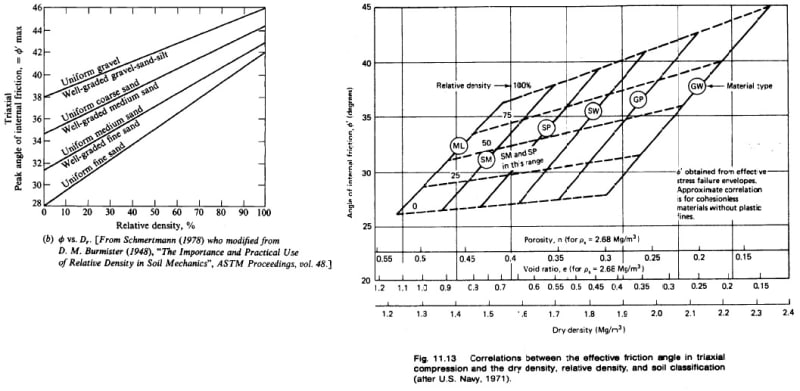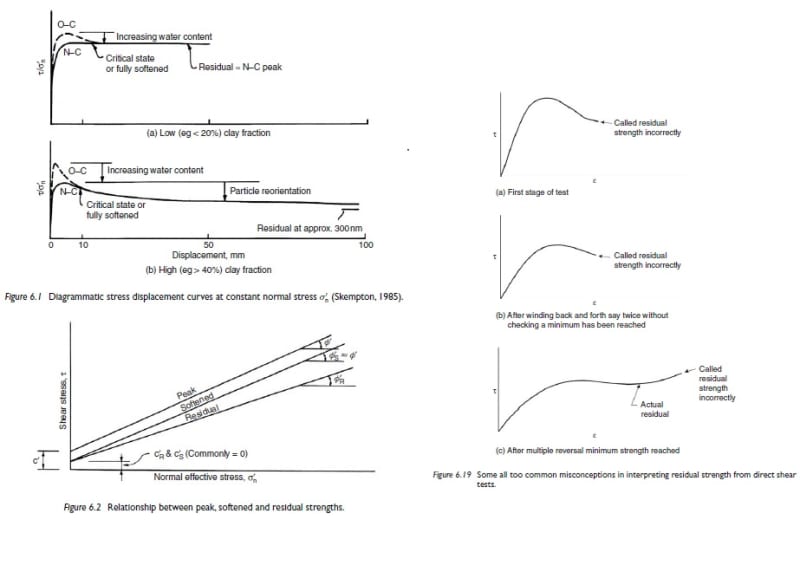ScarpShooter
Geotechnical
I'm looking for some data pertaining to the influence of the compaction standard on peak shear strength for a given soil. The situation is the construction of embankments/pads and choosing a compaction standard for the project specifications. The main objective is adequate shear strength, settlement is less critical in this situation. This seems to be one of those things in geotechnical engineering that originally had a solid rationale but has since fallen into the pit of "we've always done it this way or used this value..."
Obviously compaction and peak shear strength are related but the main question I am trying to answer is: Is there an appreciable increase in peak shear strength for a specimen compacted to 95% modified Proctor vs a specimen compacted to 92% standard Proctor? I'm assuming the answer is dependent on the soil type but have always wondered about the exact sensitivity? Owners, contractors, often complain or begrudgingly oblige compaction standards and I've always wished there was a better answer than that is what is in the specifications. Obviously a specification is as much a contracting issue as anything but I'd love to have some data/paper in the back pocket that discusses the effect of compaction and shear strength at failure to know for myself that the difference is either significant or insignificant.
My final thought on this is that the effort applied during compaction essentially sets up the initial void ratio in the embankment at an arbitrary point. To the extent that the stress applied during compaction is higher than the final in-situ stress once the embankment is constructed and loaded, the soil will be over-consolidated and likely exhibit dilatant behavior during shearing. If the embankment is high, or the surcharge loads great, then the arbitrary point in the embankment could be considered as normally consolidated. Given a choice the former would be preferable. I know that the standard and modified Proctors have a force (12 400 ft-lbf/ft3, 56,000 ft-lbf/ft3 respectively) associated with the test methods. Does anyone have any insight on the physical significance of the two values w.r.t. the expected void ratio at the end of the test?
Obviously compaction and peak shear strength are related but the main question I am trying to answer is: Is there an appreciable increase in peak shear strength for a specimen compacted to 95% modified Proctor vs a specimen compacted to 92% standard Proctor? I'm assuming the answer is dependent on the soil type but have always wondered about the exact sensitivity? Owners, contractors, often complain or begrudgingly oblige compaction standards and I've always wished there was a better answer than that is what is in the specifications. Obviously a specification is as much a contracting issue as anything but I'd love to have some data/paper in the back pocket that discusses the effect of compaction and shear strength at failure to know for myself that the difference is either significant or insignificant.
My final thought on this is that the effort applied during compaction essentially sets up the initial void ratio in the embankment at an arbitrary point. To the extent that the stress applied during compaction is higher than the final in-situ stress once the embankment is constructed and loaded, the soil will be over-consolidated and likely exhibit dilatant behavior during shearing. If the embankment is high, or the surcharge loads great, then the arbitrary point in the embankment could be considered as normally consolidated. Given a choice the former would be preferable. I know that the standard and modified Proctors have a force (12 400 ft-lbf/ft3, 56,000 ft-lbf/ft3 respectively) associated with the test methods. Does anyone have any insight on the physical significance of the two values w.r.t. the expected void ratio at the end of the test?


